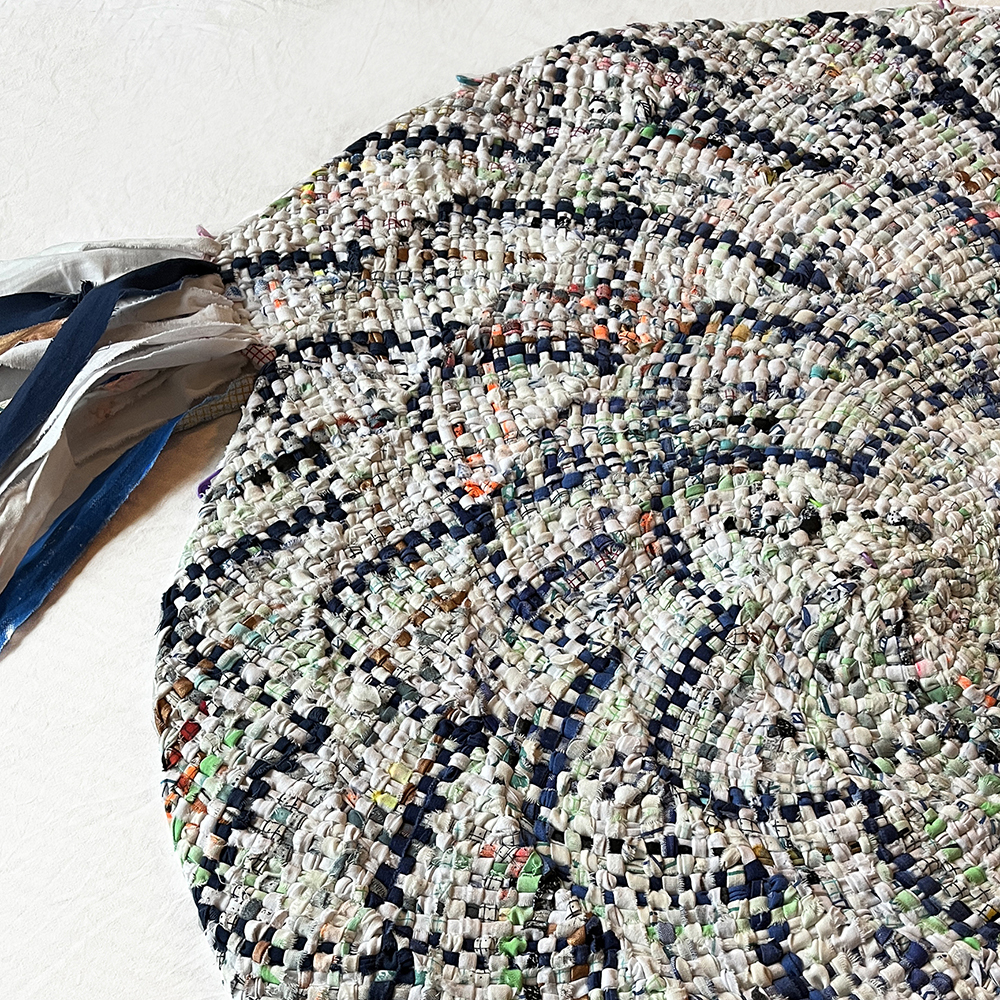The story behind an exhibited rag rug
report from a workshop cleaning
DOI:
https://doi.org/10.7577/formakademisk.5397Emneord (Nøkkelord):
rag rug, making, textile waste, learning, teachingSammendrag
In my paper, I describe my insights as manager of the textile workshop at the Department of Design at Linnaeus University, as well as how we teach material-based work. Part of my work as a workshop manager is to conduct a major clean-up at the end of every year. Last year, when I was standing in front of a pile of waste textiles, I began to reflect on how this pile of textile had been transformed from well-working material into waste. In a previous project with the research group Praktikforum, together with my colleagues, I explored what kinds of waste we produced when we made material-based artistic work. Thus, it was no surprise that practice-based work produced waste. The surprise was what I could understand from it. Looking closer into the waste, I obtained a deeper understanding of what had happened in the workshop during the year; how the students had used the material, what they had learned and what sometimes went wrong became obvious. I gained a deeper understanding of how we use, understand and teach/learn about materials and how we can develop the workshop by learning from the waste. At the same time, I learned the technique of ‘inbraiding’. For me, this was a new craft technique, in which waste textiles can be used when making rugs. I saw the opportunity to use the waste and upcycle it. By exhibiting the rug, I want to discuss the possibility of working more sustainably with crafts.
Referanser
Åkesson, L. (2023). Lättja. Det avslöjande avfallet [Laziness. The revealing apostasy]. Makadam förlag.
Arvidsson, A., Carleklev, S., Hruza, S., & Håkanson, L. (2021). Waste stories [Workshop]. Biennial International Conference for the Craft Sciences: Craft in Action, Mariestad, Sweden.
BBC (2022, February 6). The fast fashion graveyard in Chile's Atacama Desert [TV]. https://www.bbc.com/news/av/world-60249712
Belleza, E., & Luukka, E. (2018). Svenska textilflöden- textilflöden från välgörenhet och utvalda verksamheter [Swedish textile flows - textile flows from charities and selected organisations] (SMED Rapport Nr 2, 2018). Naturvårdsverket.
http://naturvardsverket.diva-portal.org/smash/get/diva2:1241255/FULLTEXT01.pdf
Blake Grey, D. (2015). Simple, spectacular braided-in rugs. Createspace Independent Publishing Platform.
Braungart, M., & McDonough, W. (2002). Cradle to cradle: Remaking the way we make things. North Point Press.
Brooks, A. (2015). Clothing poverty. The hidden world of fast fashion and second-hand clothes. Zed Books. https://doi.org/10.5040/9781350219243
Davidson, R., & Tahsin, A. (2019). Craftfulness. Mend yourself by making things. Harpers Wave.
Erikshjälpen (2023). https://erikshjalpen.se/vad-vi-gor/
Finnigan, K. (2020, February 13). Why mending is trending. Financial Times. https://www.ft.com/content/59fe8a74-4df1-11ea-95a0-43d18ec715f5
Getzmann, U. (1979). Bindningslära 2 [Weaves and drafting 2]. Liber läromedel.
Lidström, A. (2023). Redesign foundations (Publication No. 27). [Doctoral dissertation, University of Borås]. University of Borås studies in artistic research.
Naturvårdsverket (2023). https://www.naturvardsverket.se/amnesomraden/textil/dagens-textila-floden-ar-en-global-miljoutmaning/sa-paverkar-konsumtionen-i-sverige/
Röda Korset (2023). https://www.rodakorset.se/vad-vi-gor/second-hand/Skanka_till_second_hand_Detta_ska_du_tanka_pa/
Thorpe, A. (2007). The Designer's Atlas of Sustainability. Island Press.
Wellesley-Smith, C. (2015). Slow stitch. Batsford.

Nedlastinger
Publisert
Hvordan referere
Utgave
Seksjon
Lisens
Opphavsrett 2023 Lena Håkanson

Dette verket er lisensiert under Creative Commons Attribution-NoDerivatives 4.0 International License.
- Forfatteren(e) beholder sin opphavs- og kopieringsrett til eget manuskript, men gir tidsskriftet varig rett til 1) å fremføre manuskriptet for offentligheten i den opprinnelig publiserte digitale form, og 2) å registreres og siteres som første publisering av manuskriptet.
- Forfatteren må selv forvalte sine økonomiske kopieringsrettigheter overfor eventuell tredjepart.
- Tidsskriftet gir ingen økonomisk eller annen kompensasjon for innsendte bidrag, medmindre det er gjort særskilt avtale om dette med forfatteren(e).
- Tidsskriftet plikter å arkivere manuskriptet (inklusive metadata) i den opprinnelig publiserte digitale form, i minst ett dertil egnet åpent tilgjengelig langtidsarkiv for digitalt materiell, som for eksempel i de norske universitetenes institusjonsarkiv innen rammen av NORA-samarbeidet.
Verket vil bli publisert OpenAccess med en Creative Commons 4.0-lisens som tillater alle å lese, dele og tilpasse innholdet, også kommersielt, under lisensvilkårene:
Dette verket må tilskrives/ krediteres på riktig måte, en lenke må gis til CC-BY 4.0-lisensen, og endringer som er gjort må angis på en rimelig måte, men ikke på noen måte som antyder at lisensgiveren støtter deg eller din bruk.



